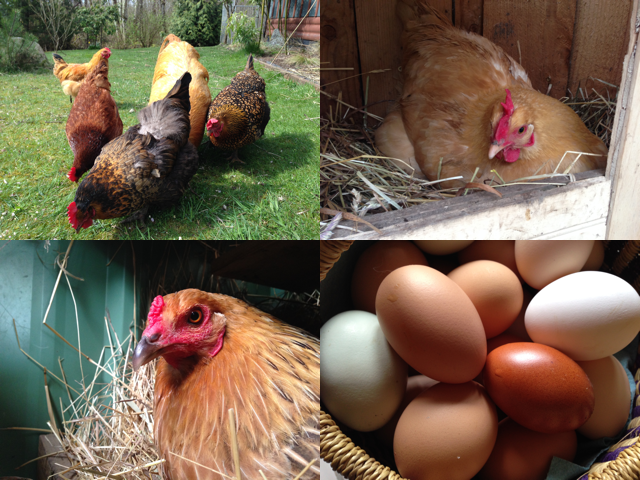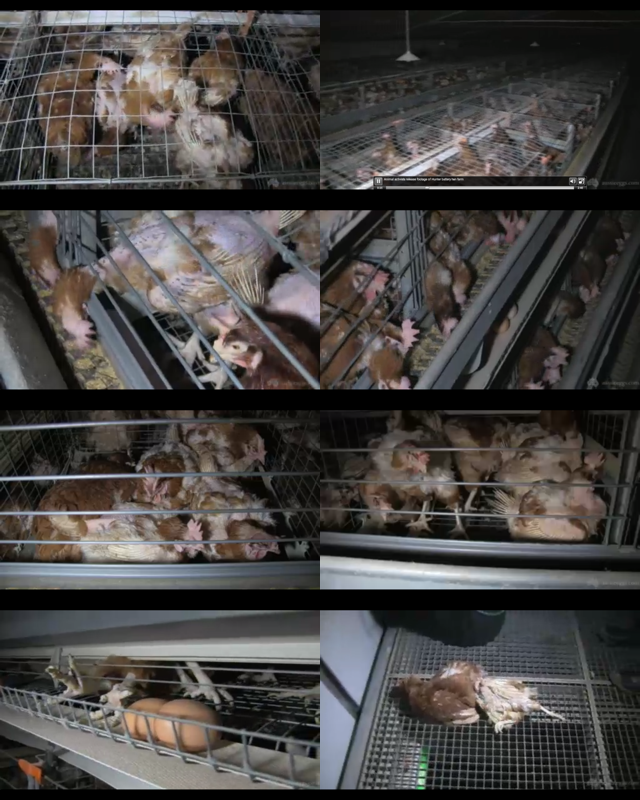When I think of waterfowl, images of ducks, geese, and herons come to mind. Chickens? Not. But, chickens go to where the bugs are, and so they spend a lot of time wading narrow streams, scratching in the mud for bugs to eat. They’ll also dig along the banks of the pond where they find plenty to eat.
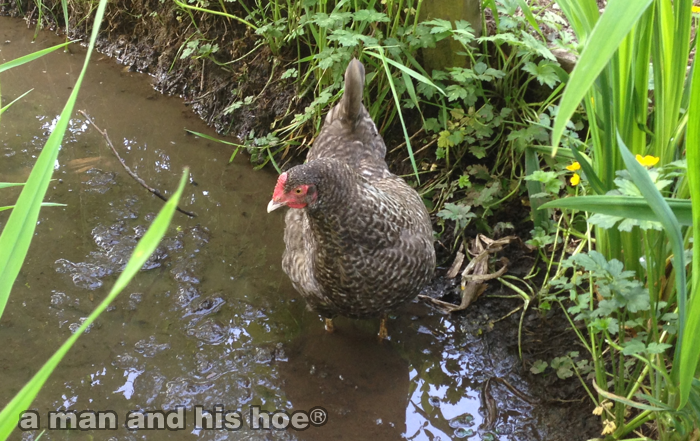
The thicker the brush along a stream the better. You can’t see them, but there are six chickens hidden under the brush.

And a mother hen leads her chicks through the forest, followed by a young rooster looking for love.
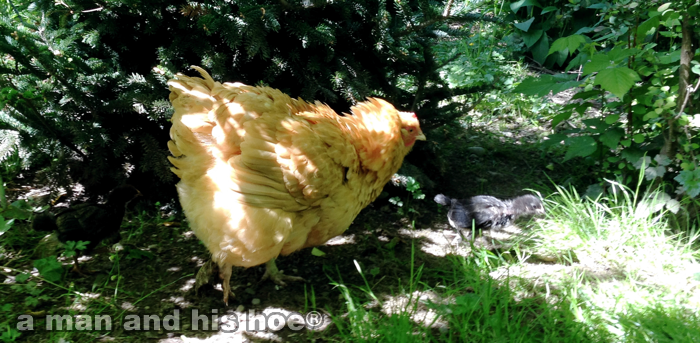
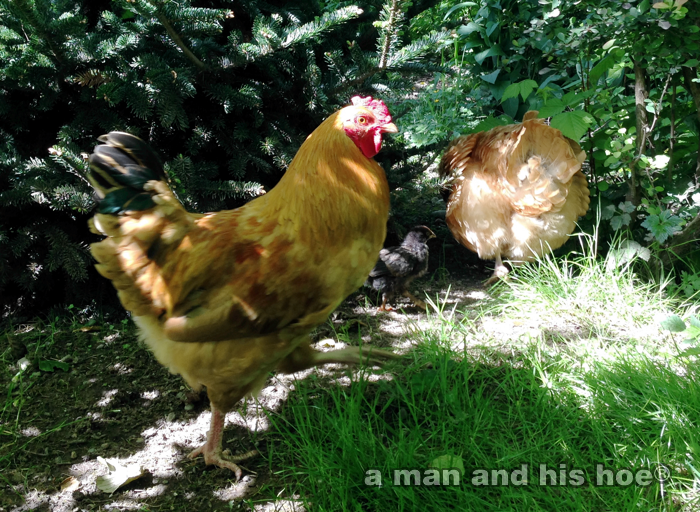
Month: May 2014
-
Waterfowl or Where the Bugs Are
-
May Flowers
This is a month of flowers. The rhododendron are in full bloom. Lawn flowers are in bloom all over. And even though the dogwood is not blooming yet, the bracts have spread out and look like flowers themselves.




-
A Mother Hen’s Touch
These chicks are now three and four days old. They stay close to their mother all day long and watch her every move. They watch what she is eating. They watch where she drinks. They roll around in the dirt with her when she takes a dirt bath. When she goes for a walk they run alongside her.
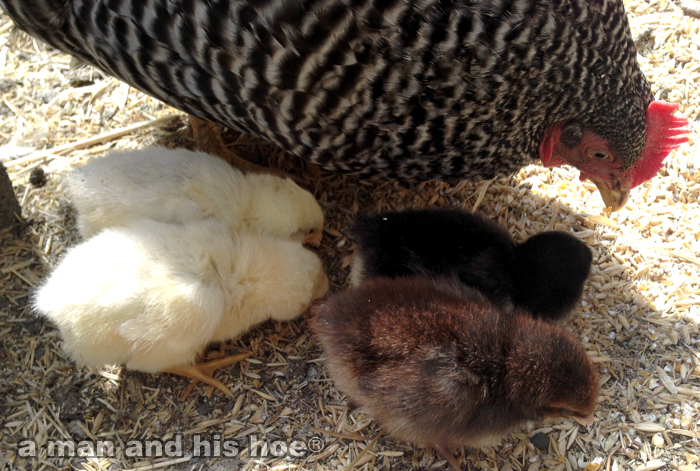
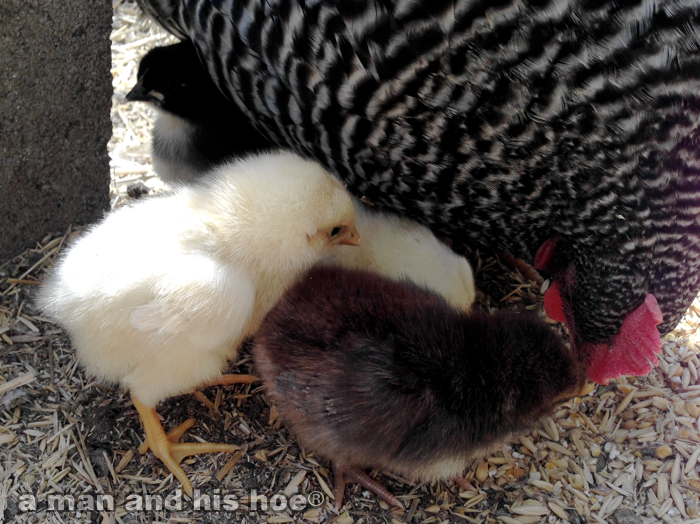

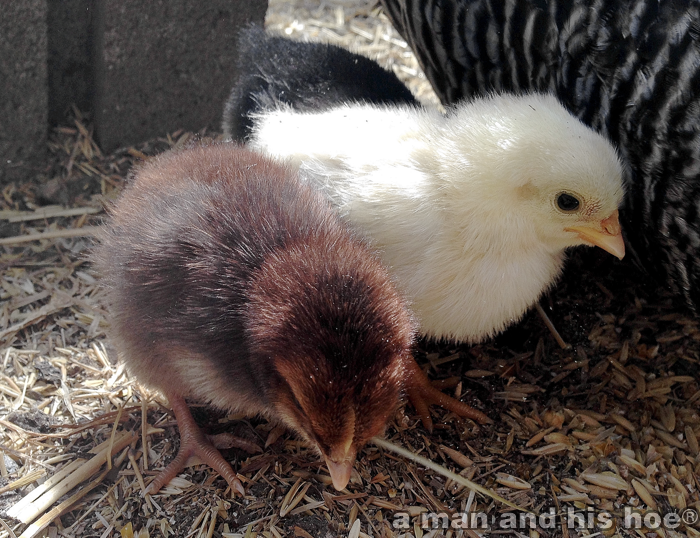
Two hundred years ago, this is how all chicks were raised. According to the National Chicken Council it wasn’t until the 1920s and 1930s that the modern chicken industry began to develop. Prior to that, chicken was a summer meat, something special for Sunday dinner.Now, the chances of a chick hatching under a mother’s warm breast only happens in small backyard flocks. The chances of it happening in a commercial setting and for customers to purchase chicken raised this way is infinitesimal.
-
Chickens Hunting
We are out in the brush today, trying to get as close as we can to a fearless, predatory chicken, as it stalks prey. Parts of the pasture have just been mowed, leaving many insects exposed and vulnerable. For a chicken on the hunt, it’s hard to imagine better conditions to go hunting.

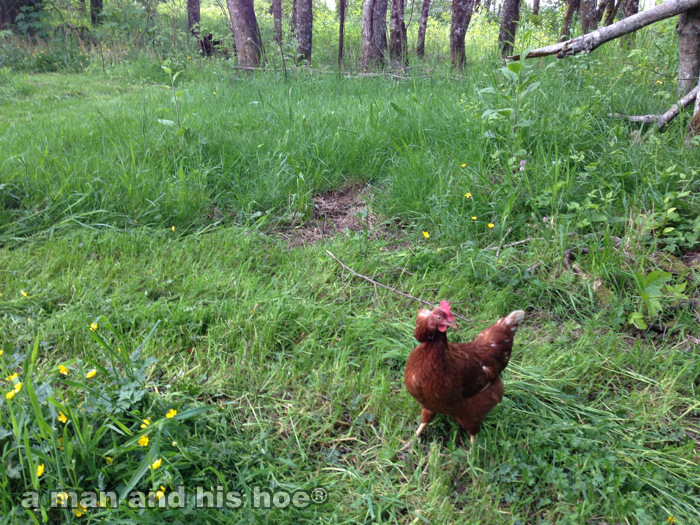
You can see the intensity in her eyes. With the grass and brush cut this low, insects don’t dare move. The slightest movement on their part, and they are doomed. Predatory chickens stab their prey with lightening speed. As far as an insect or field mouse is concerned, if a chicken can see them, their lives are over.
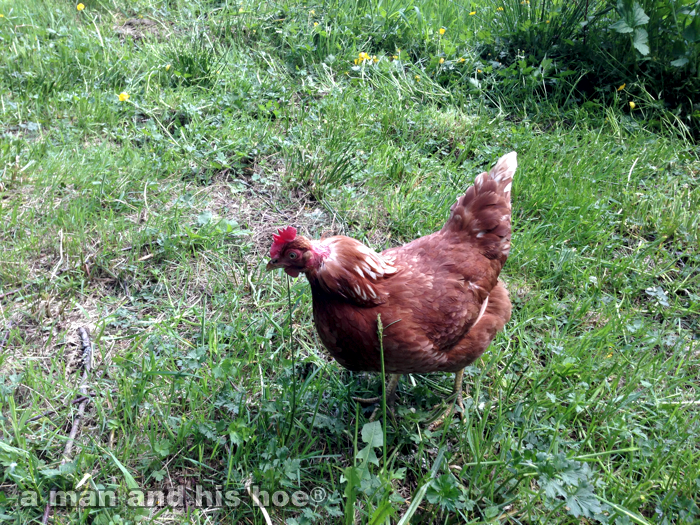

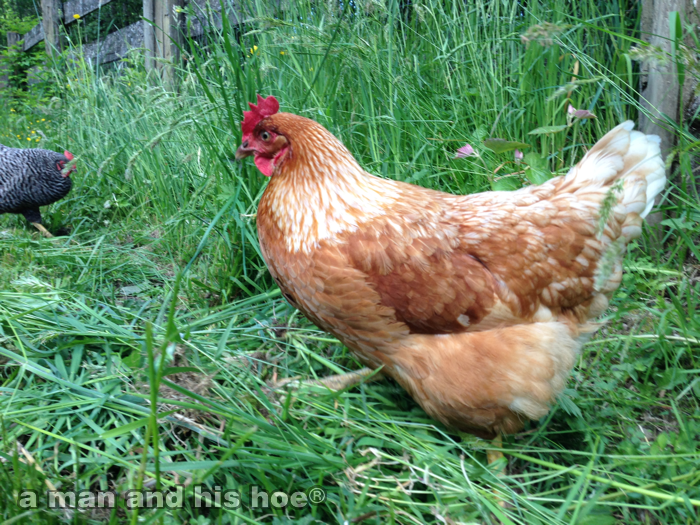
Another chicken has joined in the hunt. She’s noticed the other hen darting here and there so she knows the hunting is good. Soon more chickens will join in the hunt, like sharks drawn to chum.
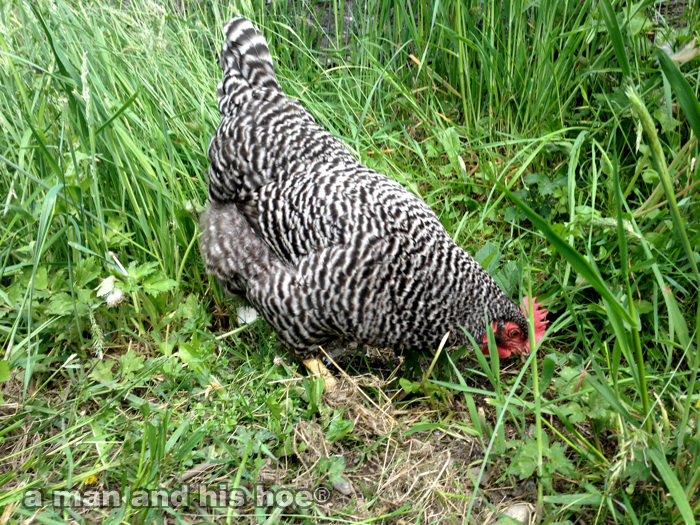
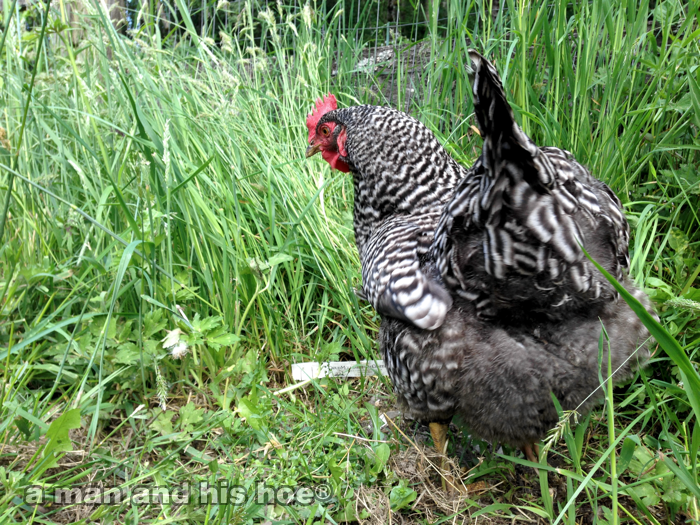
By the end of the day, the hunting chickens will have devoured thousands and thousands of insects. Those that escape the carnage will have nightmares for the rest of their lives.
